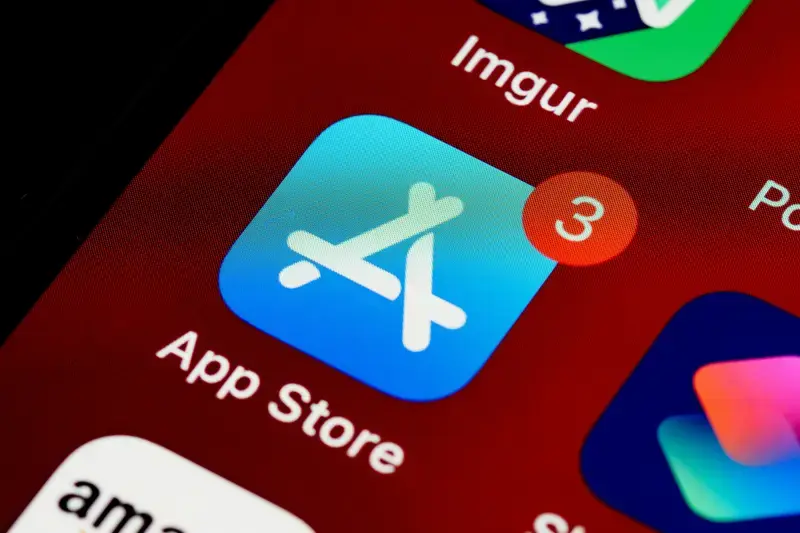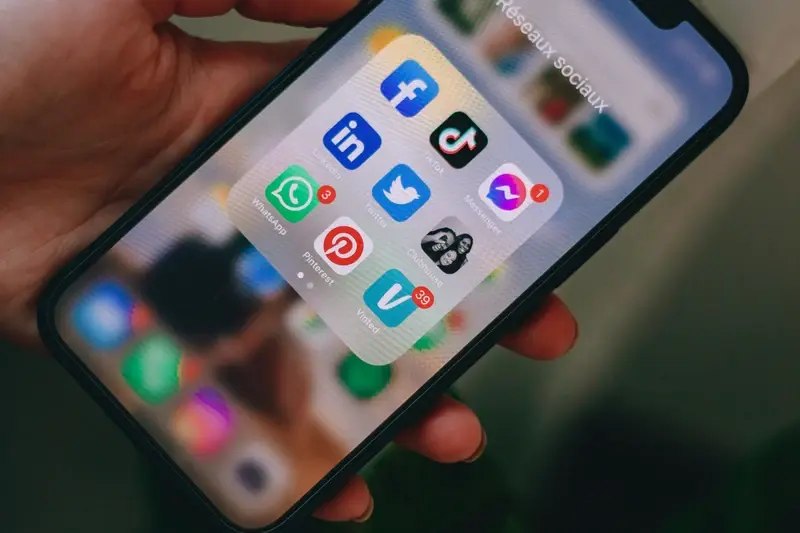How Do I Get My App Featured in the App Store Rankings?
A language learning app launches with thousands of downloads in its first week, but within a month it's buried on page fifteen of search results. The developers had built something genuinely useful—interactive lessons, speech recognition, progress tracking—but nobody could find it. Sound familiar? This happens more often than you'd think, and it's exactly why app store optimisation has become so bloody important for anyone serious about mobile success.
Getting your app noticed in today's crowded marketplace isn't about luck or having the flashiest features. It's about understanding how app store algorithms work and giving them exactly what they're looking for. ASO isn't just some marketing buzzword—it's the difference between your app thriving and disappearing into digital obscurity.
App store optimisation is like SEO's younger sibling who learned from all the older one's mistakes and got really good at the game
I've watched brilliant apps fail because their creators thought "build it and they will come" was still a viable strategy. Spoiler alert: it's not. These days, app visibility requires the same strategic thinking you'd put into any other aspect of your business. You need to understand keyword research, user psychology, technical performance metrics, and how to build momentum that actually lasts.
The good news? App store algorithms are actually quite predictable once you know what they're measuring. They want to surface apps that users will download, use, and keep using. Everything else—from your app title to your screenshot strategy—should support that goal. Whether you're launching your first app or trying to resurrect one that's lost its ranking mojo, the principles remain the same.
Understanding App Store Algorithms and Ranking Factors
Right, let's get straight to it—app store algorithms are bloody complex beasts that change more often than the British weather. I've watched these systems evolve over the years, and honestly? They've become much smarter at figuring out which apps deserve top spots.
The algorithms don't just count downloads anymore (thank goodness for that). They're looking at engagement metrics like how long people actually use your app after downloading it, whether they come back the next day, and if they're sharing it with their mates. Its all about retention now—an app with 1,000 downloads but 80% retention will outrank one with 10,000 downloads and 20% retention every single time.
What Actually Matters to the Algorithm
Here's what I've observed really moves the needle in search rankings:
- Download velocity (how quickly you're getting new users)
- User retention rates, especially day-1 and day-7 metrics
- App crashes and loading times—technical hiccups kill rankings fast
- Reviews and ratings (but quality matters more than quantity)
- Keyword relevance in your app title and description
- User engagement signals like session length and feature usage
But here's the thing that catches most people off guard—the algorithm treats different app categories completely differently. A productivity app needs different signals than a gaming app. The system has learned that people interact with various types of apps in unique ways, so it adjusts its expectations accordingly.
One mistake I see constantly? People obsessing over download numbers while their retention rates are terrible. Sure, getting featured can bring thousands of downloads, but if those users delete your app within hours, you're actually damaging your long-term ranking potential. The algorithm will notice that pattern and start showing your app to fewer people.
Perfecting Your App Store Listing
Your app store listing is basically your shop window—it's what people see before they decide whether to download your app or keep scrolling. I've seen brilliant apps fail because their listings looked like they were thrown together in five minutes, and I've watched mediocre apps succeed because they nailed their presentation. It's that important.
The thing is, app store optimisation isn't just about making things look pretty (though that helps!). Both Apple's App Store and Google Play use your listing content to understand what your app does and who it's for. Get this wrong and you'll be invisible to the people who actually need your app.
Your App Title and Subtitle Strategy
Your app title has 30 characters on iOS and 50 on Google Play to make an impression. Don't waste them on clever wordplay that nobody searches for. Include your main keyword naturally—if you've built a fitness tracking app, make sure "fitness" or "workout" appears in your title. Your subtitle gives you another 30 characters on iOS to expand on what your app actually does.
Test different title variations with friends or colleagues who don't know your app. If they can't immediately understand what it does from the title alone, you need to simplify.
Screenshots That Actually Convert
Most people decide whether to download your app within the first three seconds of seeing your screenshots. Lead with your strongest feature, show real content (not empty states), and include short captions that explain what users are looking at. The first screenshot is your hero shot—make it count.
- Use all available screenshot slots (up to 10 on iOS)
- Show your app solving real problems, not just pretty interfaces
- Include social proof or key benefits as overlay text
- Keep text large enough to read on mobile devices
- Test different screenshot orders to see what converts best
Your app description needs to hook readers in the first two lines—that's all they see before hitting "more." Focus on benefits, not features, and use bullet points to make key information scannable. Remember, you're not writing for tech enthusiasts; you're writing for real people with real problems your app can solve.
The Power of Keywords in App Discovery
Right, let's talk about keywords—because honestly, this is where most people get it completely wrong. I've seen brilliant apps disappear into the void simply because the developers didn't understand how App Store search actually works. It's not Google; the rules are different, and if you treat it the same way you'll be wondering why nobody can find your app.
Here's the thing about App Store Optimisation—you've got limited space to work with. Your app name can include keywords, but don't go mad and stuff it with every term you can think of. I mean, "Photo Editor Pro Camera Filter Beauty Selfie" might cover all your bases, but it looks terrible and users won't trust it. Instead, focus on one or two main keywords in your title and make it readable.
Where Keywords Actually Matter
The keyword field in App Store Connect is where you do your heavy lifting. You get 100 characters—not words, characters—so every letter counts. Don't waste space on your app name or company name (they're already indexed), and definitely don't use spaces after commas. "photo,edit,filter,camera" gives you more room than "photo, edit, filter, camera" and works exactly the same way.
Your app description matters too, but here's what most people don't realise: only the first few lines show up in search results before users have to tap "more." Those opening sentences need to include your main keywords naturally whilst actually making sense to humans who might want to download your app.
One last thing—keyword stuffing doesn't work and Apple's algorithm is smart enough to spot it. Focus on terms your actual users would search for, not what you think sounds professional.
Building User Reviews and Ratings That Matter
User reviews and ratings are absolutely massive when it comes to app store optimisation—they're basically the social proof that tells both users and algorithms your app is worth downloading. I've seen apps with brilliant functionality get buried because they had poor ratings, whilst others with average features climb the rankings purely because users loved them enough to leave positive feedback.
The thing is, most people only leave reviews when they're frustrated or angry; happy users typically just use your app and move on with their lives. This creates a natural bias towards negative feedback that can seriously damage your rankings if you dont actively manage it. App store algorithms heavily weight both the quantity and quality of reviews—apps with higher ratings and more recent positive reviews get pushed up in search results.
Timing Your Review Requests
Asking for reviews at the right moment is crucial. I always tell clients to prompt users after they've completed a positive action in the app—maybe they've finished a level, completed a purchase, or achieved something meaningful. Never ask immediately after download or during a frustrating moment; that's a recipe for bad ratings.
The best time to ask for a review is when your user has just experienced genuine value from your app
You can use iOS and Android's native review prompts, but be strategic about frequency. Bombarding users with review requests will backfire spectacularly. Set up your app to track user behaviour and only show review prompts to engaged users who've used the app multiple times. This approach naturally filters for people who are more likely to leave positive feedback, which helps maintain those ratings that keep your app visible in search results.
Technical Performance That Impacts Rankings
Right, let's talk about something that trips up loads of app developers—the technical side of rankings. You know what? The app stores don't just care about how pretty your app looks or how many downloads you get. They're actually watching how your app performs behind the scenes, and it affects where you show up in search results.
App store algorithms are clever little things. They track metrics like crash rates, loading times, and how smoothly your app runs on different devices. If your app crashes every five minutes or takes ages to load, the stores notice—and they'll push you down in the rankings faster than you can say "technical debt."
Speed and Stability Matter More Than You Think
I've seen brilliant apps with great ideas get buried because they didn't pay attention to performance. Your app should load in under three seconds, and honestly, even that feels slow these days. Users have zero patience for laggy apps; they'll delete yours and find something that works better.
Crash rates need to stay below 2% if you want to keep the app stores happy. Anything higher than that and you're signaling to the algorithm that something's wrong. The stores want to recommend apps that work properly—makes sense when you think about it.
Device Compatibility and Updates
Here's something that catches people out: your app needs to work well across different device types and operating system versions. If your app only runs smoothly on the latest iPhone but crashes on older models, you're limiting your potential audience and hurting your rankings.
Keep your app updated too. Apps that haven't been updated in months start looking abandoned to the algorithm, even if they still work perfectly fine.
Creating a Launch Strategy That Gets Noticed
Here's the thing about app launches—timing isn't everything, but it's pretty close. I've seen brilliant apps die a death because they launched on a Tuesday afternoon with no fanfare, and I've watched mediocre ones succeed because they nailed their launch strategy. The difference? Planning and coordination.
Your launch isn't just the day you hit "publish" in the app store console. It starts weeks before that moment. You need to build momentum, create anticipation, and coordinate multiple moving parts to give your app the best possible start. Think of it as lighting a fire—you can't just throw a match at some logs and hope for the best.
Pre-Launch Preparation
Start your launch preparation at least 4-6 weeks before you plan to go live. This gives you time to line up press coverage, gather beta feedback, and build an email list of interested users. I always tell my clients to soft launch in smaller markets first—places like Australia or New Zealand work well because they're English-speaking but have smaller user bases. This lets you iron out any bugs and gather those initial reviews without the pressure of a global launch.
Launch your app on a Tuesday, Wednesday, or Thursday for maximum visibility. Apple and Google update their featured apps mid-week, and you'll avoid the weekend noise when fewer journalists are working.
Coordinate your launch across multiple channels simultaneously. Social media, press releases, email campaigns, and any influencer partnerships should all go live within hours of each other. This creates a concentrated burst of activity that the app store algorithms love to see. It's not about being loud—it's about being consistent and coordinated across all your marketing efforts. Part of your launch planning should also include business protection considerations to ensure your mobile app is covered from day one.
Long-term Strategies for Sustained Visibility
Getting featured once is great, but staying visible? That's where the real challenge begins. I've seen too many apps spike to the top rankings only to disappear into obscurity within weeks—it's honestly heartbreaking when you know how much work went into that initial push.
The key to sustained visibility is treating your app like a living product, not a finished project. Regular updates aren't just about fixing bugs; they signal to the app stores that your app is actively maintained and evolving. I typically recommend pushing meaningful updates every 4-6 weeks. This doesn't mean adding random features—users will see right through that—but genuine improvements based on user feedback and performance data.
Building Your Community Beyond the App Store
Your app store listing is just one piece of the puzzle. The apps that maintain long-term success build communities around their products. This means having a proper social media presence, responding to user reviews (both good and bad), and creating content that keeps users engaged between app sessions.
I always tell my clients: your relationship with users doesn't end when they download your app. Email marketing, push notifications, and in-app messaging become your lifelines for maintaining engagement. But here's the thing—you can't just blast promotional content at people. You need to provide genuine value, whether that's tips for using your app better, industry insights, or early access to new features.
Seasonal and Event-Based Opportunities
Smart app developers plan their content calendar around seasonal trends and industry events. If you've got a fitness app, January is your time to shine with New Year's resolutions. Educational apps? Back-to-school season is gold. The app stores love featuring timely, relevant content, and users are actively searching for solutions during these peak periods.
Long-term success requires patience, consistency, and a willingness to adapt. The apps that stay visible are the ones that never stop improving.
Measuring Success and Adapting Your Approach
Right, so you've done all the hard work—optimised your keywords, polished your listing, worked on those reviews. But here's where things get really interesting. App store optimisation isn't a one-and-done thing; it's more like tending a garden that never stops growing.
I track dozens of metrics for my clients, but honestly? Most people get overwhelmed by the data. Let me break down what actually matters. Your keyword rankings are obviously important—you want to see those moving up over time. Download velocity (how many downloads you're getting per day) tells you if your optimisation is working. And conversion rates from your app store page? That's pure gold right there.
The Metrics That Actually Matter
Sure, downloads are nice to brag about, but retention rates tell the real story. If people download your app and delete it within a week, the app stores notice. They're not stupid. User engagement metrics like session length and daily active users feed back into your rankings in ways that most people don't realise.
The app stores reward apps that people actually use, not just download
When to Pivot Your Strategy
I've seen app owners stick to failing strategies for months because they're afraid to change what they've already invested in. Don't be that person. If your keyword strategy isn't working after 4-6 weeks, try different terms. If your screenshots aren't converting, test new ones. The beauty of app store optimisation is that you can iterate quickly—but only if you're actually paying attention to what the data is telling you. And trust me, it's always telling you something.
Conclusion
Getting your app featured in the App Store rankings isn't just about luck—it's about understanding what Apple's algorithm values and giving it exactly what it wants. I've seen hundreds of apps succeed and fail over the years, and the ones that make it to the top all share similar characteristics: they solve real problems, they're technically solid, and they create genuine user engagement.
The truth is, theres no magic button you can press to guarantee rankings. But by following the strategies we've covered—optimising your metadata, building authentic reviews, maintaining excellent performance metrics, and creating a smart launch plan—you're giving your app the best possible chance of success. The algorithms are getting smarter all the time, which actually works in your favour if you're building something people genuinely want to use.
Here's what I want you to remember: rankings are just the beginning, not the end goal. I've worked with clients who got obsessed with their position in search results but forgot about their users. Don't make that mistake. Focus on creating an app that people love using, and the rankings will follow naturally. The App Store rewards apps that keep users engaged, coming back, and talking to their friends about their experience.
Start with your metadata and performance—those are the quickest wins. Then build your review strategy and plan your launch carefully. Most importantly, keep measuring and adjusting based on what the data tells you. The mobile app world changes fast, but the fundamentals of good user experience and solid technical performance will always matter. Your app deserves to be discovered by the people who need it most.
Share this
Subscribe To Our Learning Centre
You May Also Like
These Related Guides

How Do I Optimise My App for the Apple App Store?

How Do I Get My App Discovered In The App Store?



